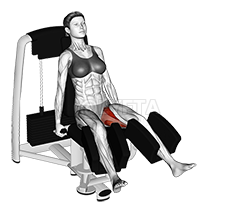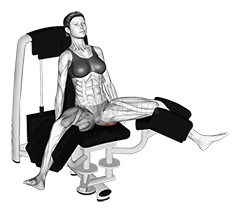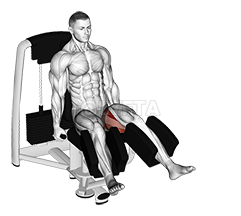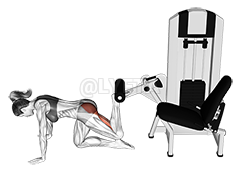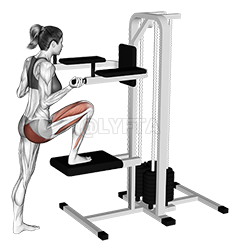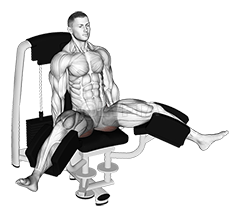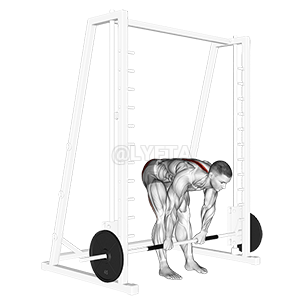
Lever Abduction Squat
Exercise Profile
Related Exercises:
Introduction to the Lever Abduction Squat
The Lever Abduction Squat is a dynamic exercise that primarily targets the glutes, quads, and hip adductors, enhancing lower body strength and stability. This exercise is suitable for both beginners and advanced individuals, as it can be easily modified to match fitness levels. Individuals may want to incorporate this exercise into their routine as it not only improves muscle tone and strength, but also promotes better posture and balance, which are essential for daily activities and athletic performance.
Performing the: A Step-by-Step Tutorial Lever Abduction Squat
- Slowly lower your body into a squat position, bending your knees while keeping your back straight and your chest up.
- As you squat down, raise the lever or barbell to shoulder height, extending your arms straight out in front of you.
- Once the lever or barbell is parallel to the floor, slowly spread your arms out to the sides, performing the abduction movement.
- After a brief pause, return your arms to the front, stand up from the squat position, and lower the lever or barbell back down to the start position. Repeat the exercise for the desired number of repetitions.
Tips for Performing Lever Abduction Squat
- Controlled Movement: Another key to performing this exercise safely is to control your movements. Avoid rushing through the squat or using momentum to lift the weight. Instead, lower your body slowly and push back up in a controlled manner. This not only helps to prevent injuries but also ensures that your muscles are fully engaged throughout the exercise.
- Depth of Squat: Aim for a deep squat where your hips go below your knees. However, don't force it if your flexibility doesn't allow it. A common mistake is to go too deep, causing the
Lever Abduction Squat FAQs
Can beginners do the Lever Abduction Squat?
Yes, beginners can do the Lever Abduction Squat exercise. However, it's important to start with light weights or even just the bar until they become comfortable with the movement. It's also crucial to maintain proper form to avoid injury. If unsure, it's always best to seek guidance from a fitness professional.
What are common variations of the Lever Abduction Squat?
- The Front Squat is another variation where the weight is held in front of the body, usually with a barbell across the shoulders, which targets the quads and upper back.
- The Split Squat is a unilateral exercise where one foot is placed in front of the other, similar to a lunge, focusing on each leg individually.
- The Overhead Squat involves holding a barbell or dumbbells above the head throughout the squat, challenging balance and stability.
- The Box Squat is a variation where the individual squats down to a box or bench before standing back up, which can help improve form and depth.
What are good complementing exercises for the Lever Abduction Squat?
- Glute Bridges: These target the glutes and hamstrings, similar to Lever Abduction Squats, but they also engage the core and lower back, providing a more comprehensive lower body workout.
- Goblet Squats: This exercise also targets the lower body, including the quads, glutes, and hamstrings, similar to Lever Abduction Squats. The added weight and different squat form can add variety and additional strength training to your workout routine.
Related keywords for Lever Abduction Squat
- Leverage machine exercises for hips
- Lever Abduction Squat workout
- Hip-targeting gym machine exercises
- Squat exercises using Leverage machine
- Lever machine hip workouts
- Abduction Squat on Leverage machine
- Strengthening hips with Lever Abduction Squat
- Lever Abduction Squat for hip muscles
- Gym exercises for hip abduction
- Training hips with Leverage machine.
